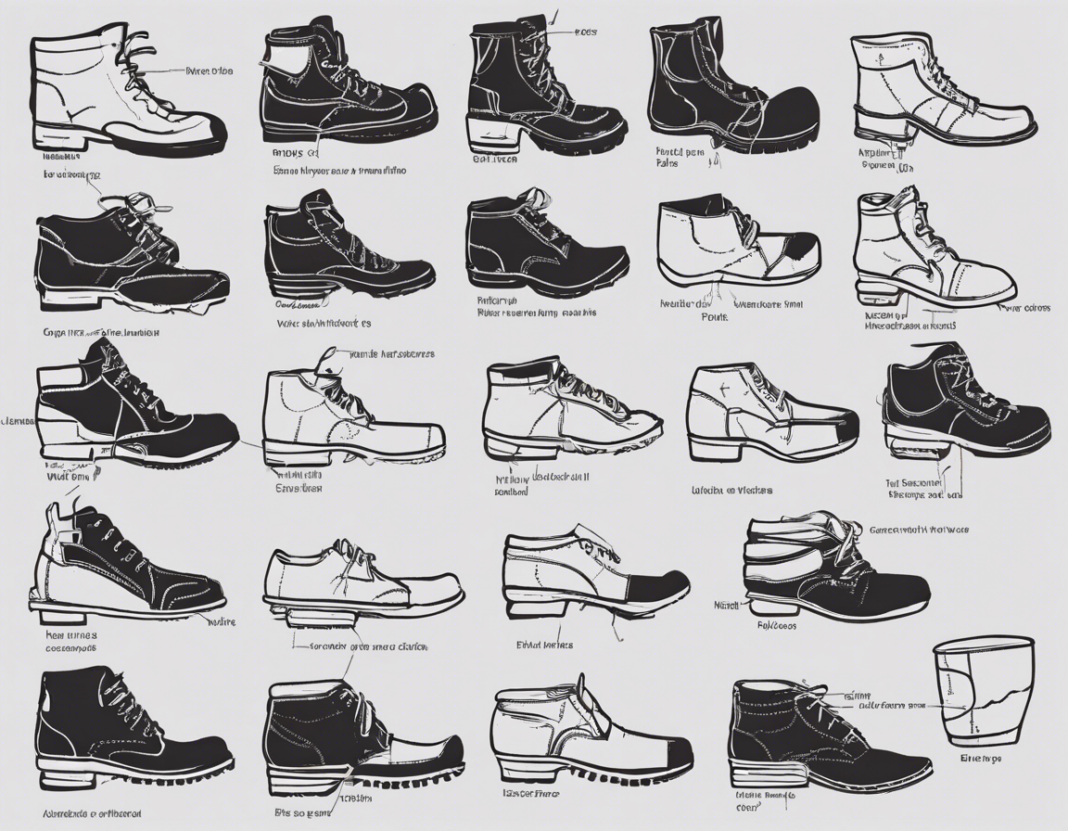Shoes are an essential part of our daily lives, providing comfort, support, and style. But have you ever stopped to think about the anatomy of a shoe? Understanding the different parts of a shoe can not only help you make informed decisions when buying new footwear but also aid in taking better care of your shoes to ensure they last longer. In this comprehensive guide, we will delve into the various components that make up a shoe, from the outsole to the insole, to give you a better understanding of how these essential items are constructed.
Components of a Shoe
1. Outsole
The outsole is the bottom part of the shoe that comes into direct contact with the ground. It is typically made of durable materials such as rubber or synthetic compounds to provide traction and protection against wear and tear. The pattern on the outsole can vary depending on the intended use of the shoe, with deeper treads for better grip on slippery surfaces.
2. Midsole
The midsole is located between the outsole and the upper part of the shoe. It plays a crucial role in providing cushioning and support to the foot. The midsole is often made of materials like EVA (ethylene-vinyl acetate) or PU (polyurethane) foam to absorb impact and reduce strain on the feet and joints.
3. Insole
The insole, also known as the footbed, is the inner part of the shoe where the foot rests. It can be removable or built-in, depending on the shoe design. The insole provides additional cushioning and support, and some shoes come with replaceable insoles for customization or orthotic inserts.
4. Upper
The upper is the top part of the shoe that covers the foot. It is usually made of materials like leather, synthetic fabrics, or knit mesh, depending on the style and purpose of the shoe. The upper provides structure and support to the foot while allowing breathability and flexibility for comfort.
5. Heel
The heel is the rear part of the shoe that elevates the foot from the ground. It helps to distribute body weight and provides stability while walking or standing. Heel heights can vary, from flat to high heels, and different shapes like block heels or stilettos offer varying levels of support and style.
6. Toe Box
The toe box is the front part of the shoe where the toes are housed. It should provide enough space for natural toe movement without rubbing or constriction. Some shoes have a roomy toe box for added comfort, especially for individuals with wide feet or certain foot conditions like bunions.
7. Eyelets
The eyelets are the holes or rings through which the shoelaces are threaded to secure the shoe on the foot. They come in different styles, such as metal eyelets or fabric loops, and help adjust the fit of the shoe to prevent slippage and ensure proper support.
8. Tongue
The tongue is the padded flap located under the laces that sits on top of the foot. It helps to cushion the instep from pressure caused by the laces and keeps debris from entering the shoe. Some shoes have a gusseted tongue that is connected to the upper to prevent side-to-side movement.
Shoe Care Tips
Now that you have a better understanding of the different parts of a shoe, here are some essential shoe care tips to help prolong the life of your footwear:
- Clean Regularly: Wipe off dirt and stains with a damp cloth and use a gentle brush to clean the outsole.
- Store Properly: Keep your shoes in a cool, dry place away from direct sunlight to prevent fading and damage.
- Rotate Shoes: Alternate between different pairs of shoes to allow them to air out and prevent odor.
- Use Shoe Trees: Invest in shoe trees to maintain the shape of your shoes and absorb moisture.
- Waterproof: Apply a waterproof spray to protect your shoes from rain and moisture damage.
Taking care of your shoes not only keeps them looking good but also ensures they provide the comfort and support you need for longer.
Frequently Asked Questions (FAQs)
1. How often should I replace my shoe insoles?
It is recommended to replace your shoe insoles every six to twelve months, depending on usage and wear.
2. Can I clean the insoles of my shoes?
Yes, you can clean the insoles of your shoes with a mild detergent and water solution, then air dry them completely before using them again.
3. Are all shoe outsoles slip-resistant?
Not all shoe outsoles are slip-resistant. Look for specific features like deep treads and rubber compounds for better traction.
4. What is the best way to store leather shoes?
Store leather shoes in a cool, well-ventilated area away from direct sunlight, and use shoe trees to maintain their shape.
5. How can I prevent blisters when wearing new shoes?
To prevent blisters, gradually break in new shoes, wear bandages on friction-prone areas, and use moleskin padding for additional protection.
Understanding the anatomy of a shoe and how to care for its different parts is essential in ensuring your footwear remains comfortable, supportive, and stylish for a long time. By following proper shoe care practices and investing in quality footwear, you can enjoy both fashion and function with every step you take.
